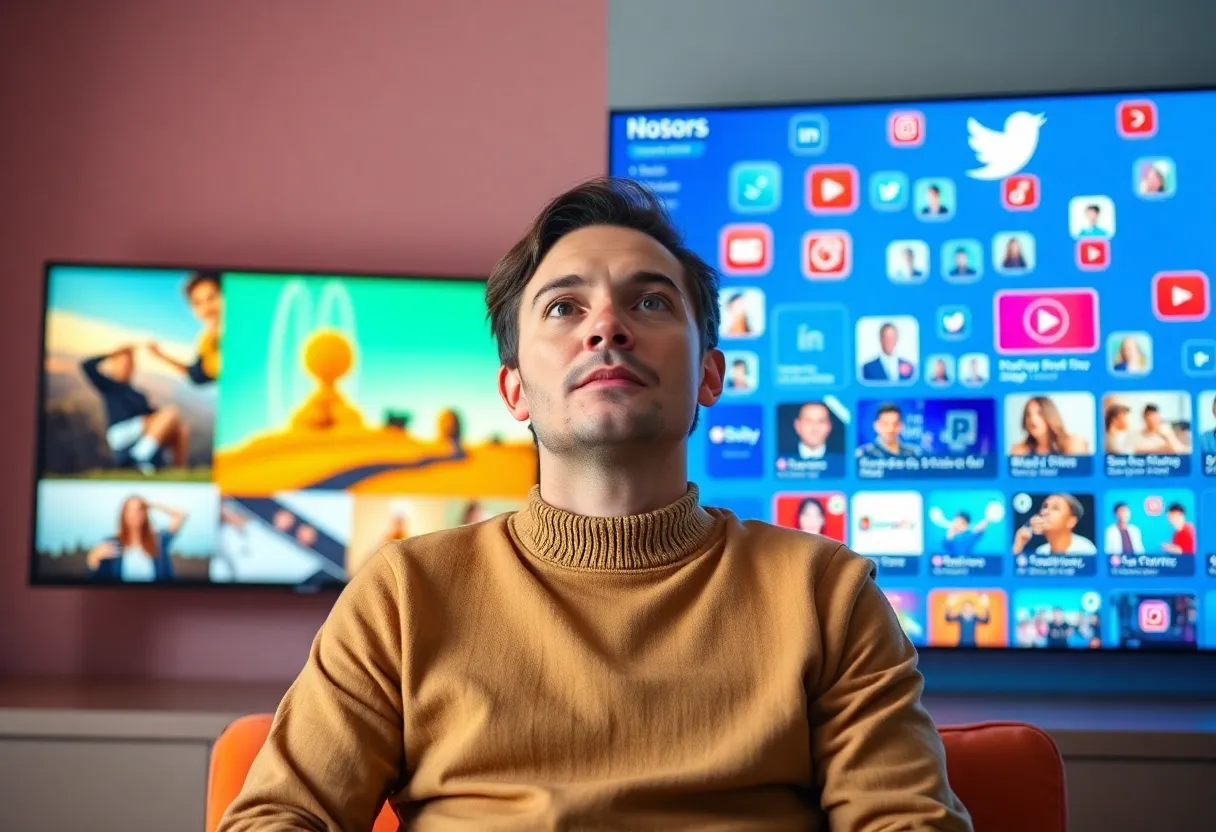

Exploring the competition between streaming services and social media platforms.
Article Sponsored by:
Real Internet Sales is a digital marketing agency located in Columbia, South Carolina. We specialize in website design and development, SEO, social media management, online advertising, AI integration, and workflow automation. Our services also include affiliate marketing and digital strategy.
Real Internet Sales also offer specialized programming for real estate firms, using IDX and RETS feeds to automatically populate MLS properties on their websites for improved property listings and sales. We also work with clients in the restaurant, tourism, and e-commerce industries to enhance their digital presence and streamline operations.
As streaming services face increasing competition from social media platforms, consumers are shifting their viewing habits. The decline of traditional cable subscriptions and the rise of ad-supported tiers on streaming services highlight changing preferences, particularly among younger generations. As traditional media companies struggle with rising costs and the need for innovation, audiences are now enjoying an abundance of choices in entertainment.
Hey there, fellow media lovers! It seems like there’s a big shift happening in the way we consume media these days. Did you know that on average, people spend about six hours a day enjoying various forms of entertainment? With so many options available, it’s curious to see how our preferences are evolving and what that means for the future of streaming services and traditional media.
As it stands, a huge chunk—nearly half of U.S. ad spending—is being fought over by media and entertainment companies. This pie is getting smaller for traditional studios as consumers gravitate more towards social video platforms. Unlike before, where pay TV dominated our living room screens, social platforms are now serving up a vast array of free content and are armed with sophisticated advertising tools. The result? Audiences are increasingly choosing these platforms over traditional studios.
If you’ve been thinking about cutting the cord, you’re not alone! Recent figures show a decline in pay TV subscriptions from 63% to 49%. It’s particularly common among younger generations—roughly 23% of Generation Z and 18% of millennials intend to ditch their cable subscriptions within the next year. Why? Many cite the high costs of cable compared to more affordable subscription video-on-demand (SVOD) options.
Speaking of costs, the typical household income in the U.S. hovers around $80,000. With rising expenses, it’s no wonder that many consumers are prioritizing essential spending over extra subscriptions. With cable bills averaging $125 per month compared to only $69 for a bundle of four paid streaming services, the lure of cutting the cable cord becomes even stronger.
It’s not just consumers who are feeling the financial pinch; traditional studios are encountering escalating production and marketing costs too. In response, they are starting to explore bundling strategies and collaborations to lure back audiences while managing to keep prices lower. Unfortunately for them, they’re facing increased competition from more agile SVOD services and social platforms that are providing both entertaining and high-quality storytelling.
Let’s not forget that many folks are expressing frustration with traditional cable and satellite television services. Viewers are increasingly feeling let down by high prices and the saturation of advertisements. For many, the struggle is real when it comes to finding content that feels worth their time or money. In fact, recent surveys indicate that 41% of consumers believe the value of content offered through SVOD isn’t worth the price tag—a notable increase from last year.
Interestingly, many subscribers seem to come and go, with churn rates remaining high at 39%. That means a lot of folks are signing up for a while, then dropping out! In response, streaming platforms are experimenting with ad-supported tier options to reel in new subscribers. The trend is quite telling, as more than half of SVOD subscribers are now using these ad-supported services—a jump of eight percentage points from last year.
And what about the role of social media? Younger consumers, particularly Generation Z and millennials, find social media ads to be more relevant than those from traditional media. They increasingly perceive social media content as more relevant and engaging. Interestingly, many report receiving better content recommendations through these platforms compared to traditional SVOD services, showcasing just how much consumer preference has shifted.
The landscape for media is clearly transforming. Traditional media companies are grappling with the dual pressures of higher production costs and the need to innovate against nimble social platforms. It’s a new world for media consumption, and as consumers, we get to enjoy the myriad of choices being offered! Save those streaming services with an ad tier, and keep a keen eye on what social platforms have for us next!
Global Avocado Exports Decline Amid Holiday Shipping Woes
How Can You Use Mobile-First Marketing Strategies to Boost Your Digital Presence?

Concrete Strength • Metal Resilience • Connecting Futures
Phone: (203) 777-0751
Email: admin@nscclips.com
News Summary A shooting occurred at a Walmart store in Lancaster, South Carolina, on April…
News Summary The annual March Madness tradition in Upstate South Carolina takes an appetizing twist…
News Summary The Greenville County community mourns the loss of 22-year-old Derrick Shaquan Higgins, who…
How Can You Use Customer Emotion to Drive Your Digital Marketing Success? Understanding customer emotion…
News Summary Greenville recently celebrated Michelin North America, Inc.'s 50-year presence in South Carolina. Local…
News Summary In an unexpected twist, 43 monkeys escaped from the Alpha Genesis Primate Research…